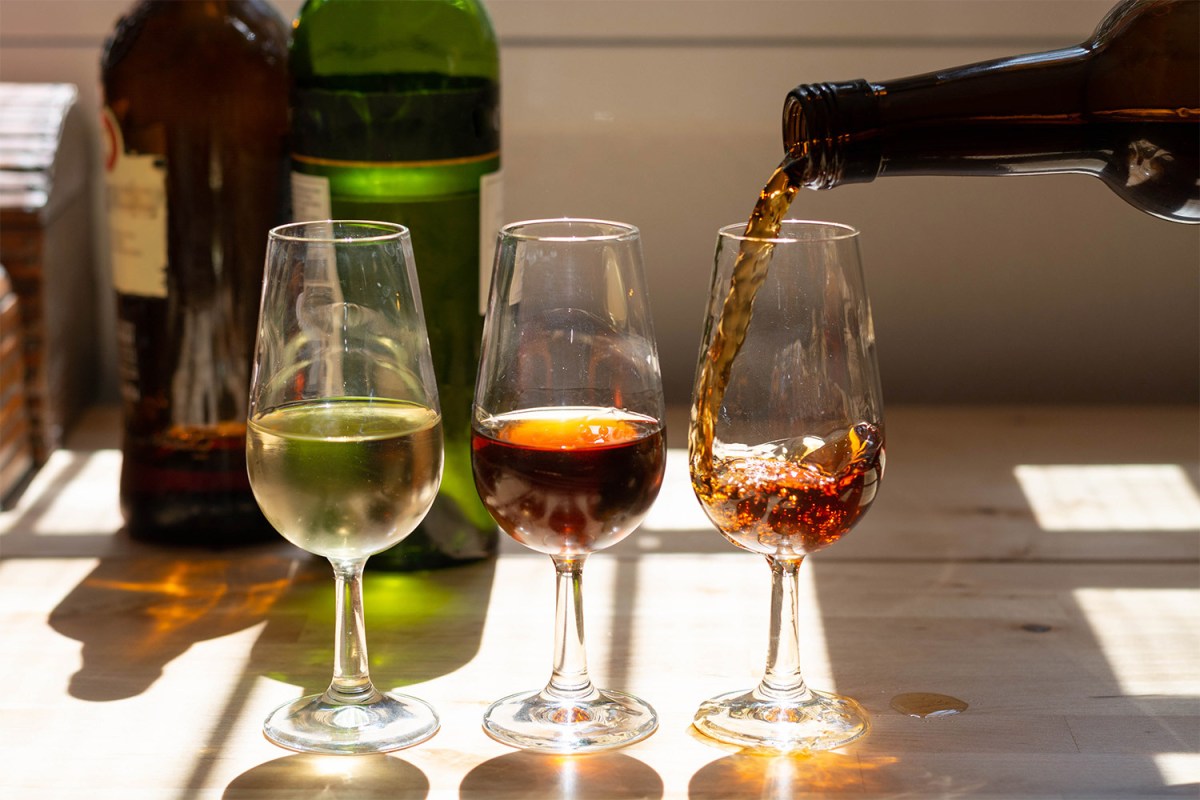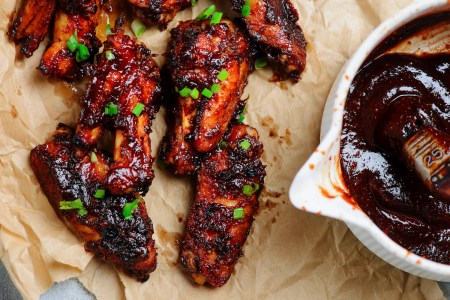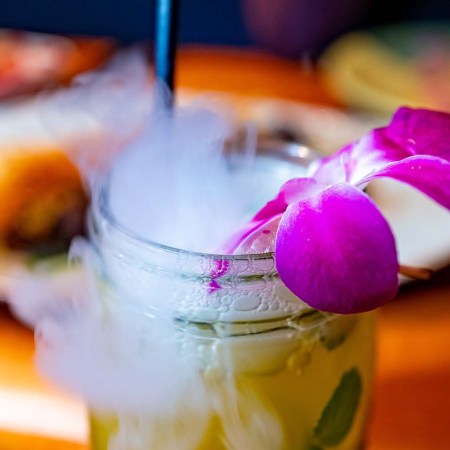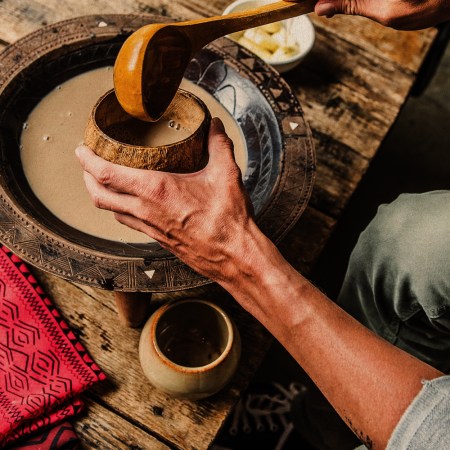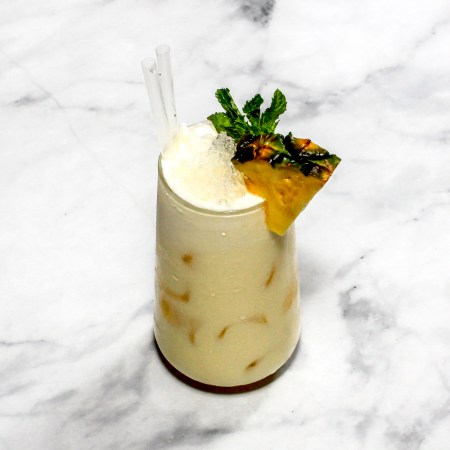A Swiss Army knife can be a handy gadget to carry around. Its handiness depends on its owner. If you know how to use its versatility, it can be the go-to tool to grab in a host of situations. If you don’t know how to use the gadgets and doodads tucked inside its stubby, bright-red base, its primary purpose is to fill space in your pocket.
Sherry operates in the same way in cocktails. Once you know how to use the fortified wine’s versatility, it can turn into the secret sauce that elevates a mixed drink. “If something’s not working in a drink, I’ll reach for a sherry,” explains Ali Martin, partner and cocktail director of The Up & Up in Manhattan’s SoHo district. “I love it so much, it’s kind of a knee-jerk reaction.”
However, if you don’t how to dig into sherry’s bag of tricks, it could end up just being a nice bottle in your fridge — and, note, you should store it in the fridge. Gaining a full appreciation of the beverage requires understanding the different sherry types and what they can bring to a drink.
The Main Styles of Sherry
There are seven main sherry styles for cocktails: Fino, Manzanilla, Amontillado, Oloroso, Palo Cortado, Pedro Ximenez (PX) and Cream. Variances in production such as aging and oxidation influence each style, resulting in a string of profiles ranging from light and dry (Fino) to heavy and sweet (PX). The outlier of this range is cream sherry, a sweetened blend of dry and sweet sherry that somewhat functions as its own animal.
These profiles correlate with specific flavor profiles. The citric, saline notes on the light end of the sherry spectrum shift into nuttier, bread-like qualities in the mid-point before landing into the raisin and date flavors found on sherry’s dark side. Knowing how a sherry fits within this flavor rainbow is key to using it in a cocktail. “A Fino sherry is what you’ll use in a light, summery drink, and a PX sherry is what you’ll reach for if you want richer, almost dirtier flavors,” says Mitch Lyons, co-owner of Highball in Phoenix, Arizona. “An Amontillado sherry will put you right in the middle.”
Once you have a bead on what certain sherries can bring to a drink and how to use them, they’ll start manifesting their Swiss Army knife-like properties. “A sherry can pull out notes in a cocktail that you may not know are there,” explains Amanda Elder, spirits content and education manager for New York-based importer Skurnik Wines & Spirits. “This is why they’re such a great tool to have in a bartender’s toolbox. It’s easy to use it if you want to experiment with flavors.”
“If you know how to balance sherry in a cocktail, you can bend it to your needs,” adds Eliza Hoar, bar lead at Youngblood in San Diego, California. “You can use it in a split base with gin, experiment with different liqueurs or modifiers, or do a number of crazy applications.”
Sherry at the Bar
Sherry’s combination of versatility and variance makes it a favorite ingredient for bartenders, and they’ll express this love in numerous ways. This can be in the form of something simple, such as putting a classic cocktail like a Sherry Cobbler or an Adonis on the menu. Other times, it can mean manipulating a style’s profile to create the unexpected. “I make a peanut butter and jelly cocktail using Oloroso sherry and rye,” Martin says. “It works because Oloroso has such a nutty, rich roundness.”
Placing sherry cocktails on the menu is also becoming an increasingly important strategy for bars. As the no-and low-alc movement continues to flourish in bars nationwide, bartenders see sherry and its low ABV content as essential to provide excellent cocktails for guests who want a proper drink without overindulgence. They also see sherry as a drink that can change perceptions of what a low-alc drink can be. “One thing that tends to be misconstrued about low-ABV drinks is that they must be sweet and fruity,” Lyons says. “A sherry cocktail proves that this is not the case.”
5 Ways to Use Cocktail Bitters in Your Kitchen
Borrow from your bar cart to whip up these sweet and savory recipesUsing Sherry at Home
The home bartender doesn’t need the entire range of sherries to enjoy sherry cocktails at home; just a couple of bottles will do nicely. One word of warning: Using the wrong style of sherry in a cocktail can be problematic. Sherry’s ability to extract flavors, combined with its own delightful notes, can quickly pull a drink out of balance. If you pick up a bottle of sherry to make cocktails at home, the smart play is to make sure you use ingredients that will play nice with your sherry’s profile. “You need to balance your drink based on whatever sherry you use,” Hoar explains. “For example, if you’re using a sweet sherry like a PX, you better add bitters and citrus to round it out.”
If you have a specific sherry cocktail in mind, double-check the drink’s specs to see what type of sherry is called for and shop accordingly. If you don’t, whatever you buy is strictly based on personal preference — the right bottle is the one that’s right for you. And if you’re unsure what that preference may be, ask a few bartenders. They’re always down to talk about sherry.
Every Thursday, our resident experts see to it that you’re up to date on the latest from the world of drinks. Trend reports, bottle reviews, cocktail recipes and more. Sign up for THE SPILL now.
